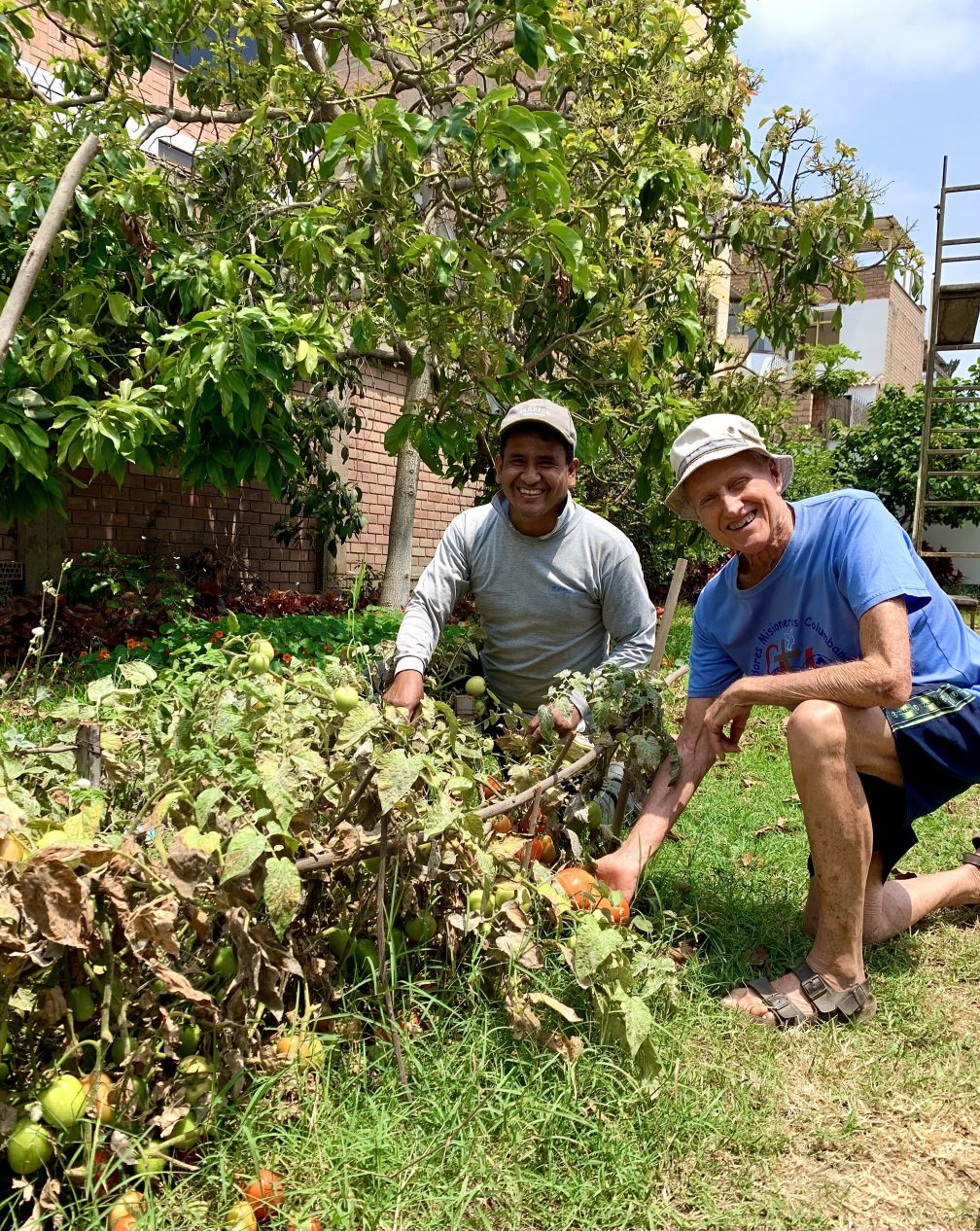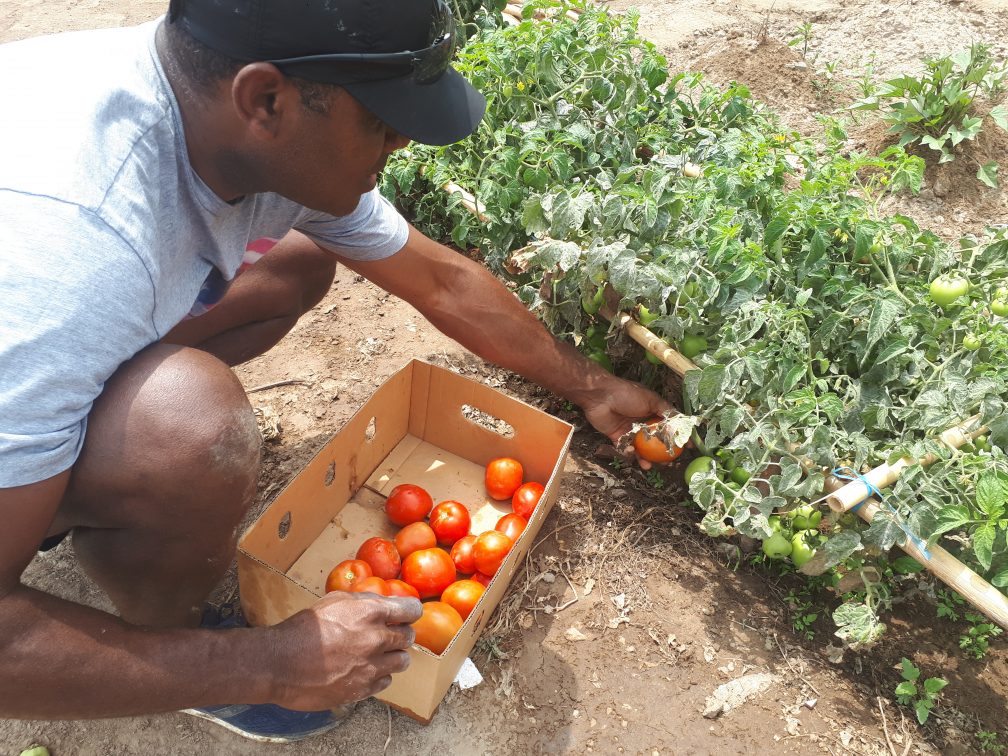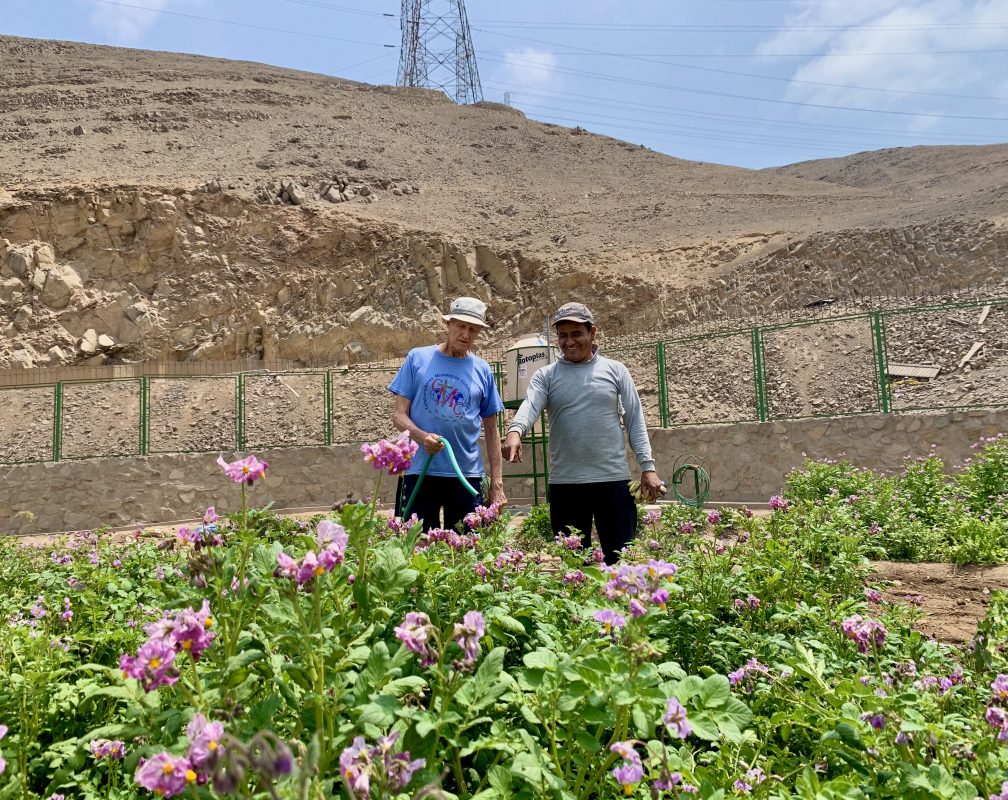When Covid-19 appeared on the scene, Columbans throughout the world had to react to the emergency. We all had to ask ourselves, “How can I carry on serving the People of God in these strange new times ?” For Australian John Hegerty, on mission in South America, it was a case – literally – of going back to the roots. He responded to the pandemic by combining his current role as, “Father”, to his original one as….“Farmer”.
Born in 1941 in Redesdale, Victoria, he grew up on his parents’ 1,700 acre sheep, cattle and rotational holding. “From the word go I helped with all the jobs around the place”, John recalls. He worked on the property right up to joining the Columbans, aged 23. “I never had a city job. I went into the seminary as a ‘hayseed’. I was the ‘boy from the bush’, a ‘country hick’ !”
During his holidays from the seminary in Sydney, he returned home and helped Dad and Mum with whatever was needed. He even managed to host some of his fellow seminarians for a week or so. “This was cheap labour !” One thing that still makes him laugh is how some of these big, burly footballers and surfies wilted under the pressure of sheep work. When “crutching” (removing wool from areas where flies might strike), their backs would pack up. When pruning hooves to avoid footrot brought on by the lush springtime grass, their hands would swell up. Maybe “Hegs” couldn’t keep up on long runs in the bush or on the football field, but here on the farm he was out in front !
After ordination he was posted to Peru, where he’s been for most of the last fifty years. By 2020 he reckoned he’d filled just about every missionary role imaginable. Then, Covid came knocking.
He was in semi-retirement in our Centre House in Lima, a pleasant spot set amidst a kind of oasis (Lima lies in the world’s driest desert). Peru was hit very hard by the pandemic and the economic collapse which followed. The Columbans were in lock-down for months, leaving them with two challenges – how to keep THEMSELVES sane and the PEOPLE cared for, given the new restrictions.
“We had this Irish Columban, Tom Hanley, who works in Chile but who’d been left stranded up here by the lock-down,” John explains. “Now, Tom had had a lot of experience on the land back in Ireland, so he suggested he’d use his time digging up and planting part of our grounds. Not only would it keep him occupied, but it’d also make us partially self-sufficient. He sowed vegetables, corn, herbs and (being Irish) even some potatoes. Well, they all grew like mad.” The experiment was a great success.
As conditions eased, the Irishman was able to return to Chile, leaving the new post of farmer vacant. John suddenly felt those old green fingers twitching again. Fond memories of life back on the farm in Australia came flooding back. So…..he filled the vacancy.
“Not that I was alone”, he remarks. Full-time local gardener Gaspar returned to lend his expert advice. Also coming to help were two young Columban seminarians from Fiji, Atonio Saula and Iowane Naio. “This was the perfect match,” says John. “Not only were they two strong bucks from a farming background in Fiji, but they were also working in a poor parish where there were a number‘comedores’.” (“Comedores” are essentially subsidized canteens. The Columbans set up a series of them at this time to help feed families who’d lost their sources of income. Each ‘comedor’ caters for up to a hundred of the needy at each midday sitting.)

A regular routine has now emerged. John and Gaspar look after the day-to-day running of the mini-farm. As required, Atonio and Iowane come in and prepare new beds, add manure, do the watering and harvest the produce. Some is kept for the Columban houses, but the majority goes to one or more of the ‘comedores’. It is planned to continue this system even after the coronavirus emergency ends for, as John points out, the effects of this virus on the poor will last for years.
“Hegs” insists this has resulted in the best of all worlds. The poor are helped, Columban running costs are defrayed and, “it is great therapy for me. I love it. I go out working every afternoon after lunch. Much healthier than a long ‘siesta’. It’s doing me good.”
A LOT of good – for John, for the Columbans, for Peru.
It really has been worthwhile, going back to the roots.



